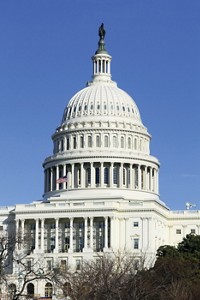Advertisement
Grab your lab coat. Let's get started
Welcome!
Welcome!
Create an account below to get 6 C&EN articles per month, receive newsletters and more - all free.
It seems this is your first time logging in online. Please enter the following information to continue.
As an ACS member you automatically get access to this site. All we need is few more details to create your reading experience.
Not you? Sign in with a different account.
Not you? Sign in with a different account.
ERROR 1
ERROR 1
ERROR 2
ERROR 2
ERROR 2
ERROR 2
ERROR 2
Password and Confirm password must match.
If you have an ACS member number, please enter it here so we can link this account to your membership. (optional)
ERROR 2
ACS values your privacy. By submitting your information, you are gaining access to C&EN and subscribing to our weekly newsletter. We use the information you provide to make your reading experience better, and we will never sell your data to third party members.
Policy
Playing Nice On The Budget
Congress’s bipartisan budget deal seen as hopeful sign for improved R&D funding.
by Andrea Widener
December 23, 2013
| A version of this story appeared in
Volume 91, Issue 51
A rare bipartisan budget deal has passed the Senate and House of Representatives, a move that has the science community hopeful for more cooperation going forward.
The compromise plan sets the overall budget levels through fiscal 2015 and eases the across-the-board budget cuts, called sequestration, during that period (see page 26).
The next big test for congressional cooperation will come as lawmakers quickly begin to work out how that money will be divided among programs and agencies for fiscal 2014, which began on Oct. 1. And they have only until Jan. 15, 2014, when the current stopgap funding measure expires, or a government shutdown could happen.
“There are hurdles to clear when Congress returns in January, but this is a good sign and we look forward to this being the tone of 2014,” says Shawn Osborne, president of the high-tech trade group TechAmerica Foundation.
As it has done often in recent years, Congress likely will wrap its remaining fiscal 2014 appropriations—which include all R&D support—into one immense omnibus spending bill. This could be a challenge because the Senate and House still need to decide on exact budgets for agencies, including those that fund R&D.
But, because the deal provides budget increases for fiscal 2014 and 2015, Matthew Hourihan at the American Association for the Advancement of Science estimates the budget deal could give science agencies, which were hit hard by sequestration, up to 8% more than 2013 funding. Which programs will be winners and losers, however, will be worked out by lawmakers over the next few weeks.



Join the conversation
Contact the reporter
Submit a Letter to the Editor for publication
Engage with us on Twitter